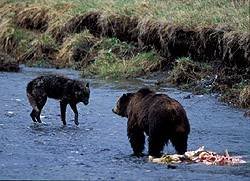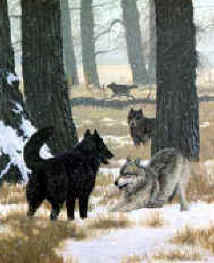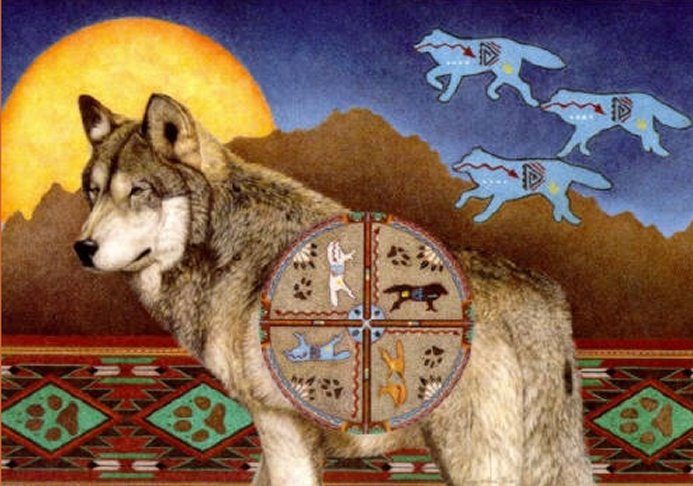Today is New Year's Eve, the seventh day of the twelve days of Christmas.

Today is celebrated the Feast of St. Sylvester. Surprisingly little is known about this Saint. What is known is that he was the son of a Roman soldier and that he became Pope at a critical period in history. In the 150 years preceeding Sylvester's Papacy, Christians had been brutally persecuted by Rome's Emporers from Nero to Diocletian. Indeed, the Diocletianic Persecution, from 303 A.D. to 311 A.D., was Rome's largest, and bloodiest official persecution of Christianity. But then Constantine became the Emporer of Rome in 306 A.D. Constantine publicly converted to Christianity in 312 A.D. and ended the Christian persecutions by the Edict of Milan in 313 A.D. The next year, Sylvester was elected Pope. For the next 21 years, he oversaw the Papacy while Constantine, who would outlive St. Sylvester by two years, spread Christianity throughout the Roman world.
 It was during Sylvester's pontificate were built many of the great Churches, including the Basilica of St. John Lateran, Santa Croce in Gerusalemme, St. Peter's Basilica, and several cemeterial churches over the graves of martyrs. Saint Sylvester did not himself attend the First Council of Nicaea in 325, but he was represented by two legates and he approved the council's decision.
It was during Sylvester's pontificate were built many of the great Churches, including the Basilica of St. John Lateran, Santa Croce in Gerusalemme, St. Peter's Basilica, and several cemeterial churches over the graves of martyrs. Saint Sylvester did not himself attend the First Council of Nicaea in 325, but he was represented by two legates and he approved the council's decision.
One of the traditions associated with St. Sylvester, at least in Germany, is St. Sylvester's punch:
2 cups sugar
2 cups water
750 ml bottle of dry white wine
750 ml bottle of dry red wine
1/4 cup fresh lemon juice
1 cup dark Jamaican rum
Preparation:
1.Bring water and sugar to a boil in a large pot, while stirring constantly until the sugar has dissolved.
2.Add the wines and bring the mixture to a simmer. Stir in the rum and lemon juice.
3.Ladle the punch into cups and serve warm.
AND TO ALL, A HAPPY NEW YEAR
Monday, December 31, 2012
The 7th Day of Christmas - St. Sylvester & New Year's Eve
Posted by
GW
at
Monday, December 31, 2012
0
comments
![]()
Labels: 12 days of Christmas, Christmas, Constantine, Seventh Day of Christmas, St. Sylvester
Saturday, December 31, 2011
On The Seventh Day Of Christmas . . .
Reposted from 2010:
Today is New Year's Eve, the seventh day of the twelve days of Christmas.

Today is celebrated the Feast of St. Sylvester. Surprisingly little is known about this Saint. What is known is that he was the son of a Roman soldier and that he became Pope at a critical period in history. In the 150 years preceeding Sylvester's Papacy, Christians had been brutally persecuted by Rome's Emporers from Nero to Diocletian. Indeed, the Diocletianic Persecution, from 303 A.D. to 311 A.D., was Rome's largest, and bloodiest official persecution of Christianity. But then Constantine became the Emporer of Rome in 306 A.D. Constantine publicly converted to Christianity in 312 A.D. and ended the Christian persecutions by the Edict of Milan in 313 A.D. The next year, Sylvester was elected Pope. For the next 21 years, he oversaw the Papacy while Constantine, who would outlive St. Sylvester by two years, spread Christianity throughout the Roman world.
 It was during Sylvester's pontificate were built many of the great Churches, including the Basilica of St. John Lateran, Santa Croce in Gerusalemme, St. Peter's Basilica, and several cemeterial churches over the graves of martyrs. Saint Sylvester did not himself attend the First Council of Nicaea in 325, but he was represented by two legates and he approved the council's decision.
It was during Sylvester's pontificate were built many of the great Churches, including the Basilica of St. John Lateran, Santa Croce in Gerusalemme, St. Peter's Basilica, and several cemeterial churches over the graves of martyrs. Saint Sylvester did not himself attend the First Council of Nicaea in 325, but he was represented by two legates and he approved the council's decision.
One of the traditions associated with St. Sylvester, at least in Germany, is St. Sylvester's punch:
2 cups sugar
2 cups water
750 ml bottle of dry white wine
750 ml bottle of dry red wine
1/4 cup fresh lemon juice
1 cup dark Jamaican rum
Preparation:
1.Bring water and sugar to a boil in a large pot, while stirring constantly until the sugar has dissolved.
2.Add the wines and bring the mixture to a simmer. Stir in the rum and lemon juice.
3.Ladle the punch into cups and serve warm.
AND TO ALL, A HAPPY NEW YEAR
Posted by
GW
at
Saturday, December 31, 2011
0
comments
![]()
Labels: 12 days of Christmas, Christmas, Seventh Day of Christmas, St. Sylvester
Thursday, December 22, 2011
Celebrating The Twelve Days Of Christmas
In the modern era, Christmas celebrations begin on Christmas eve and, for many of us, end with the celebration of the birth of Christ on Christmas day. But for much of the last two millennia, Christmas wasn't the end of the season of celebration - it was the start of it. And as the song tells us, it went on for twelve days.
Fortunately, there is a historian on the net,
Got Medieval, who has, in the past, shed some light on the history of our celebrations:
. . . The Nativity is celebrated on December 25, a date set in 337 by Pope St. Julius I. So, Merry [1674th] Christmas, everybody! For most of the Middle Ages, Christmas was not, as it is today, the culmination of the holiday season, but rather its beginning. The twelve days of Christmas begin on Christmas, after all, and stretch until January 5th, also known as Twelfth Night, the day before Epiphany, the day the Magi arrived. . . .
December 26 marks the Feast of St. Stephen the Protomartyr of all Christianity. You may remember him as the guy that Saul helps to stone in Acts. And if you're American, you probably spent at least part of your childhood wondering why "Good King Wenceslas" looked out on the feast of Stephen instead of Christmas, since you sing the song at Christmastime. . . .
The Feast of St. John the Evangelist--not to be confused with St. John the Baptist--comes the next day, on December 27. St. John has the distinction of being the only one of the original twelve apostles to live to be an old man, rather than dying as a young martyr. According to one story, John was almost martyred, however, when someone tried to poison his wine, but he was saved because it was his habit to bless his wine before he drank it. John's blessing didn't just passively purify the wine--according to the story, the poison rose up magically from the chalice and formed into the shape of a servant that then slithered off. Thus, St. John often appears in medieval iconography as a man holding a chailce with what looks like steam coming out of it.*** In recognition of this near miss, traditional Catholics celebrate St. John's with lots of wine. I guess magic snakes are as good an excuse as any.
If you look closely at the image from the medieval calendar above, you can see that December 28 is illustrated by two midgets impaled on a spear that's being propped up by someone's decapitated head. That's because December 28th is The Feast of the Holy Innocents, commemorating the children massacred by Herod in his failed attempt to kill off Christ. . . .
St. Thomas Becket, Henry II's "turbulent priest" is commemorated with a feast on December 29. (He's the one pictured above near the end with a dagger sticking out of his head.) As a Chaucerian, I'm pretty tired of Thomas Becket. I mean, what's the big deal? He's just a bishop who got killed by some overzealous royal sycophants. Sure, he's known for curative powers, but what saint isn't? . . .
Rounding out the year, The Feast of Pope St. Sylvester is celebrated on December 31. Sylvester is chiefly notable for being the pope that Emperor Constantine was said to have given all his lands to, thus granting the papacy superiority to all temporal monarchs--at least, that's the story the popes told. . . .
Just as a person is the sum of their choices in life, so are we, in a collective sense, the sum of our history. It pays to know it. . . . Do visit Got Medieval for his additional commentary on the Saints above.
The NYT tells us today that, according to the CPI (Christmas Price Index), the cost for giving a loved one all of the gifts set out in the "Twelve Days of Christmas" has risen this year to $101,000.
On the 1st Day of Christmas . . . Celebrating The Birth Of Christ
On the 2nd Day of Christmas . . . Feast of St. Stephen, The First Martyr of the Church
On the 3rd Day of Christmas . . . Feast of St. John the Evangelist & The Blessing Of The Wine
On the 4th Day of Christmas . . . Feast of the Holy Innocents
On the 5th Day of Christmas . . . Feast of St. Thomas a' Becket
On the 6th Day of Christmas . . . Feast of the Holy Family*
On the 7th Day of Christmas . . . Feast of St. Sylvester
On the 8th Day of Christmas . . . Solemnity of Mary, Mother of God . . . and during Medieval times, The Feast of Fools and the Feast of the Circumsision
On the 9th Day of Christmas . . . Feasts of Sts. Basil the Great and Gregory Nazianzen
On the 10th Day of Christmas . . . Feast of the Holy Name
On the 11th Day of Christmas . . . Feria
On the 12th Day of Christmas . . . 12th Night
The Epiphany
For more on the origins of our Christmas traditions, including why we celebrate Christmas on Dec. 25 and how the Norse God Odin came to be Santa Claus, please visit here.
As a palate cleanser, here is Frank Kelly's Irish version of the 12 days of Christmas . . .Heh - it's rolling on the floor funny.
On a final note, no Anglo-American celebration of Christmas is complete without egg-nog. You will find several very fine recipes here.
Do please have a merry and happy 12 days of Christmas.
Posted by
GW
at
Thursday, December 22, 2011
2
comments
![]()
Labels: 12 days of Christmas, Christmas, epiphany, Magi, Nativity, Pope, Saturnalia, St. John the Evangelist, St. Julius I, St. Stephen, St. Sylvester, St. Thomas Becket, syncretism, twelfth night, venerable bede
Thursday, December 31, 2009
On The Seventh Day Of The Twelve Days of Christmas

And you thought Christmas was over? You obviously don't know your Medieval history. Fortunately, we have a historian on the net who blogs on nothing else - Got Medieval. It is one of the most interesting of history blogs on the net . . . and do be sure to check out the Medieval personals on the side of his blog for any lonely hearts out there:
. . . The Nativity is celebrated on December 25, a date set in 337 by Pope St. Julius I. So, Merry 1672th Christmas, everybody! For most of the Middle Ages, Christmas was not, as it is today, the culmination of the holiday season, but rather its beginning. The twelve days of Christmas begin on Christmas, after all, and stretch until January 5th, also known as Twelfth Night, the day before Epiphany, the day the Magi arrived.
As an aside, scratch most any Christian holiday and you'll find all sorts of pagan customs caught up in it. That does not detract from the religious meaning of the holiday, but merely goes to show how early Christianity followed a policy of "syncretism" during the process of conversion. They adapted as much as possible of the local pagan customs into the overlay of Christianity. Indeed, our recent "1672nd" celebration of Christmas is itself very much a creature of syncretism, adapting the ancient Roman festival of Saturnalia into a celebration of the birth of Christ. And the Celtic Cross, with its overlay of a sun symbol, is yet another result of syncretism.
Probably the most famous memorialization of a papal order to use the process of syncretism comes from the writings of the Venerable Bede, who notes that in 601 A.D., Pope Gregory sent a letter to his missionaries instructing them to adapt local customs and places of worship as part of the conversion process whenever possible. If you want to learn more about the history of Christmas, by the way, there are a series of good videos I posted here. But none of that includes the additional information provided by the proprietor of Got Medieval, so to continue with his erudition:
December 26 marks the Feast of St. Stephen the Protomartyr of all Christianity. You may remember him as the guy that Saul helps to stone in Acts. And if you're American, you probably spent at least part of your childhood wondering why "Good King Wenceslas" looked out on the feast of Stephen instead of Christmas, since you sing the song at Christmastime. . . .
The Feast of St. John the Evangelist--not to be confused with St. John the Baptist--comes the next day, on December 27. St. John has the distinction of being the only one of the original twelve apostles to live to be an old man, rather than dying as a young martyr. According to one story, John was almost martyred, however, when someone tried to poison his wine, but he was saved because it was his habit to bless his wine before he drank it. John's blessing didn't just passively purify the wine--according to the story, the poison rose up magically from the chalice and formed into the shape of a servant that then slithered off. Thus, St. John often appears in medieval iconography as a man holding a chailce with what looks like steam coming out of it.*** In recognition of this near miss, traditional Catholics celebrate St. John's with lots of wine. I guess magic snakes are as good an excuse as any.
If you look closely at the image from the medieval calendar above, you can see that December 28 is illustrated by two midgets impaled on a spear that's being propped up by someone's decapitated head. That's because December 28th is The Feast of the Holy Innocents, commemorating the children massacred by Herod in his failed attempt to kill off Christ. . . .
St. Thomas Becket, Henry II's "turbulent priest" is commemorated with a feast on December 29. (He's the one pictured above near the end with a dagger sticking out of his head.) As a Chaucerian, I'm pretty tired of Thomas Becket. I mean, what's the big deal? He's just a bishop who got killed by some overzealous royal sycophants. Sure, he's known for curative powers, but what saint isn't? . . .
Rounding out the year, The Feast of Pope St. Sylvester is celebrated on December 31. Sylvester is chiefly notable for being the pope that Emperor Constantine was said to have given all his lands to, thus granting the papacy superiority to all temporal monarchs--at least, that's the story the popes told. They even had a document forged, the so-called Donation of Constantine, to back them up. Lorenzo Valla, the Renaissance scholar, eventually pointed out the many problems with it, including the fact that nobody seems to have mentioned the Donation in print until about four hundred years after it was supposed to have been written. Oh, silly medieval popes, your pitiful forgeries can only fool people for six hundred years or so. Why do you even try?
Lol. Hmmm, just as a person is the sum of their choices in life, so are we, in a collective sense, the sum of our history. It pays to know it. And besides, it's always interesting and often humorous. Do pay Got Medieval a visit for his additional commentary on the Saints above.














































